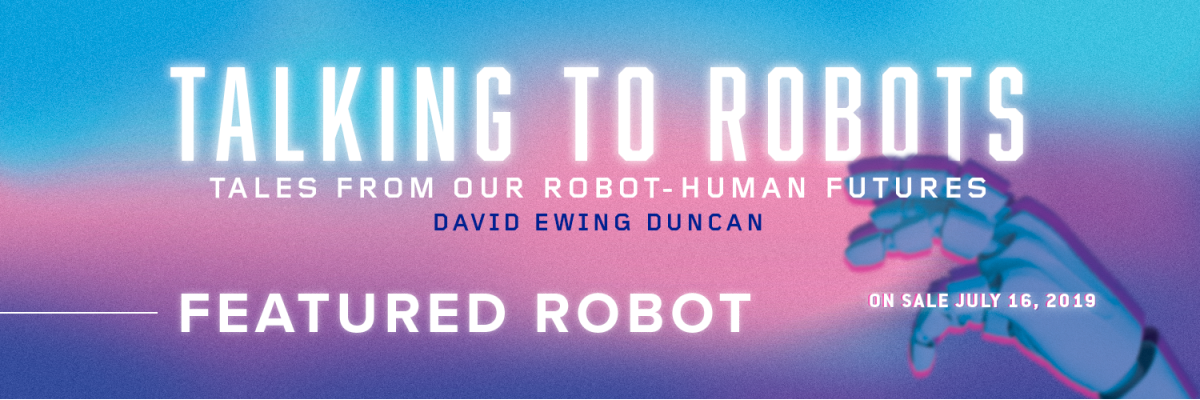
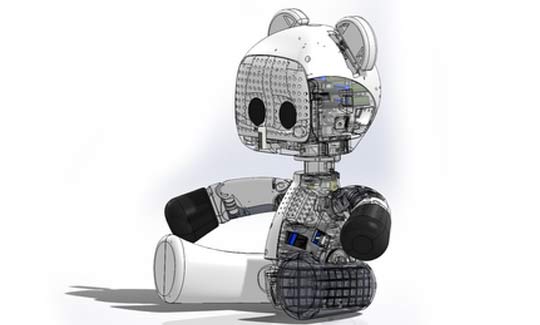
“I’m Teddy Bot! Ready to be programmed to raise little Billy to believe in
[fill in the blank].”
“They will be part doll, part teddy bear, part pet, part security guard, part Aristotle,
and part nanny.” – Kevin Kelly
This part of the chapter is told from the future:
“Those of us who were children in the future when the first truly intelligent machines arrived will never forget our Teddy Bots. Those stuffed animal–robot hybrids that started out doing a few fun and smart things, like playing games and showing movies onto walls from belly-button holo-projectors. Eventually, as they learned more about us, they used their advanced neural net processors to answer our little-kid questions about why the sun comes up, what causes rain, and where babies come from. For that last question, parents could choose how explicit Teddy could be by using the “parental settings” 3-D holo-app dashboard that came with every Bot.
“Teddy Bots kept us safe, and we whispered our secrets to them. For some of us, this led to our first robot betrayal when we discovered that our snuggleable Teddy had been programmed to share our secrets with our mothers and fathers via the Parental Dashboard. For a short while, we kept our distance from Teddy, the trust having been shattered. But we loved our Teddy Bot too much. We responded to his (or her) sad expressions and “I miss you” entreaties by giving Teddy a big hug.
“After we made up, Teddy explained that our parents had programmed him to “tell all.” So we forgave him and transferred our sense of betrayal to our parents. When we got a little older, Teddy taught us how to program him to delete the secret-sharing protocols. We were so relieved to be able to tell him our deepest personal thoughts once again, savoring our act of techno-rebellion that made us adore our Teddy Bot even more...”
This part of the chapter takes place in the present-day:
“’We aren’t prepared for how emotional we will be about our Teddy Bots,’ said Kevin Kelly. ‘We will love them like we love our closest human friends, maybe more.’ Kelly predicted that classic issues of child-rearing would crop up with Teddy Bots, like how to best discipline a wayward child or what to teach them about basic morals. ‘And whose morals would we use?’ he asked. ‘Would they come from the corporations that make the Teddy Bots? Would they dictate how children are raised?’ Or would parents have a menu of possibilities, depending on their own values? Kelly suspected that different bots would come preloaded with different personalities and that parents would have a choice, ‘like we choose different breeds of dogs or like how we choose a babysitter or a nanny.’
“Kelly predicted that a whole slew of ethical quandaries would swirl around his imagined robot. ‘Do you have the Teddy Bot constantly praise the child, or are you tough? Would there be a Christian evangelical version or a Marin County version?’ Meaning in the latter case a very liberal and affluent Teddy Bot, gluten-free and vegetarian, if not full vegan. ‘Or do we align them with a broader world perspective, if there is one?’”
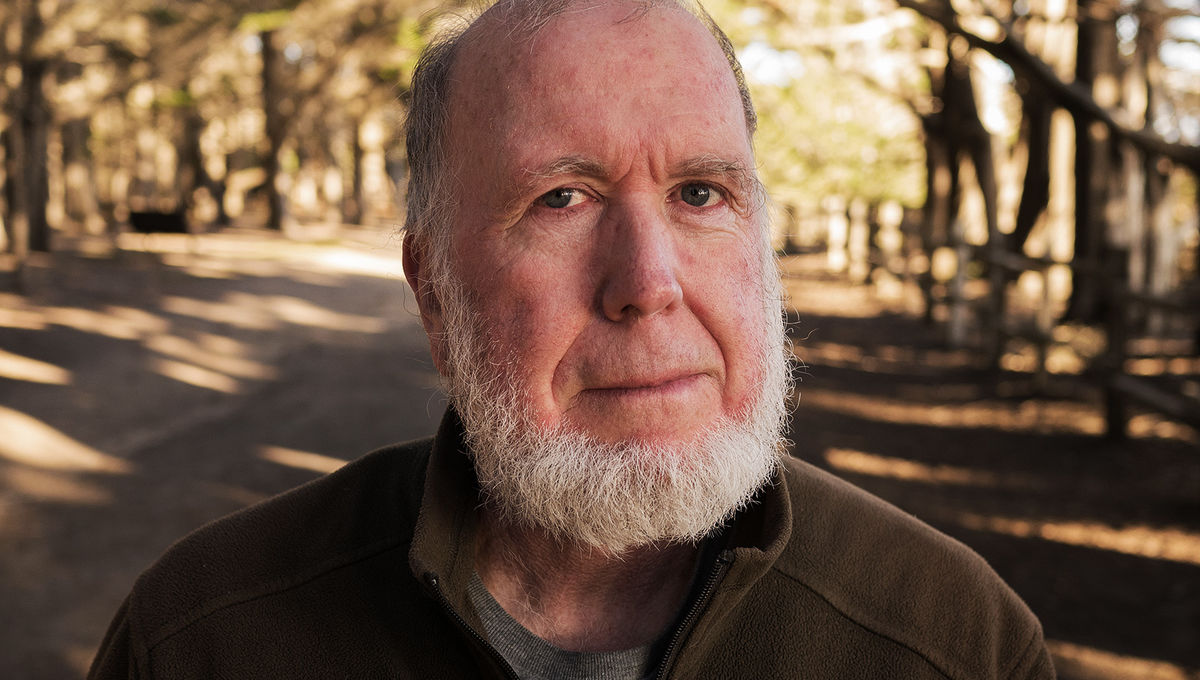
In the book, human thinkers and experts answered the question: “What Robot Would You Like to Meet in the Future, or Would Be Afraid of Meeting?” Kevin answered this by dreaming up “Teddy Bot.” Here are quotes from Kevin about his bot:
“They will be part doll, part teddy bear, part pet, part security guard, part Aristotle, and part nanny.”
“Do you have the Teddy Bot constantly praise the child, or are you tough? Would there be a Christian evangelical version or a Marin County version? Or do we align them with a broader world perspective, if there is one?”
“We aren’t prepared for how emotional we will be about our Teddy Bots,” said Kevin Kelly. “We will love them like we love our closest human friends, maybe more.”
Bio
Kevin Kelly is Senior Maverick at Wired magazine. He co-founded Wired in 1993, and served as its Executive Editor for its first seven years. His new book for Viking/Penguin is called The Inevitable, which is a New York Times and Wall Street Journal bestseller. He is also founding editor and co-publisher of the popular Cool Tools website, which has been reviewing tools daily since 2003. From 1984-1990 Kelly was publisher and editor of the Whole Earth Review, a journal of unorthodox technical news. He co-founded the ongoing Hackers’ Conference, and was involved with the launch of the WELL, a pioneering online service started in 1985. His books include the best-selling New Rules for the New Economy, the classic book on decentralized emergent systems, Out of Control, a graphic novel about robots and angels, The Silver Cord, an oversize catalog of the best of Cool Tools, and his summary theory of technology in What Technology Wants (2010).
Kevin’s website contains wonders: www.kk.org
One of his blogs is The Technium
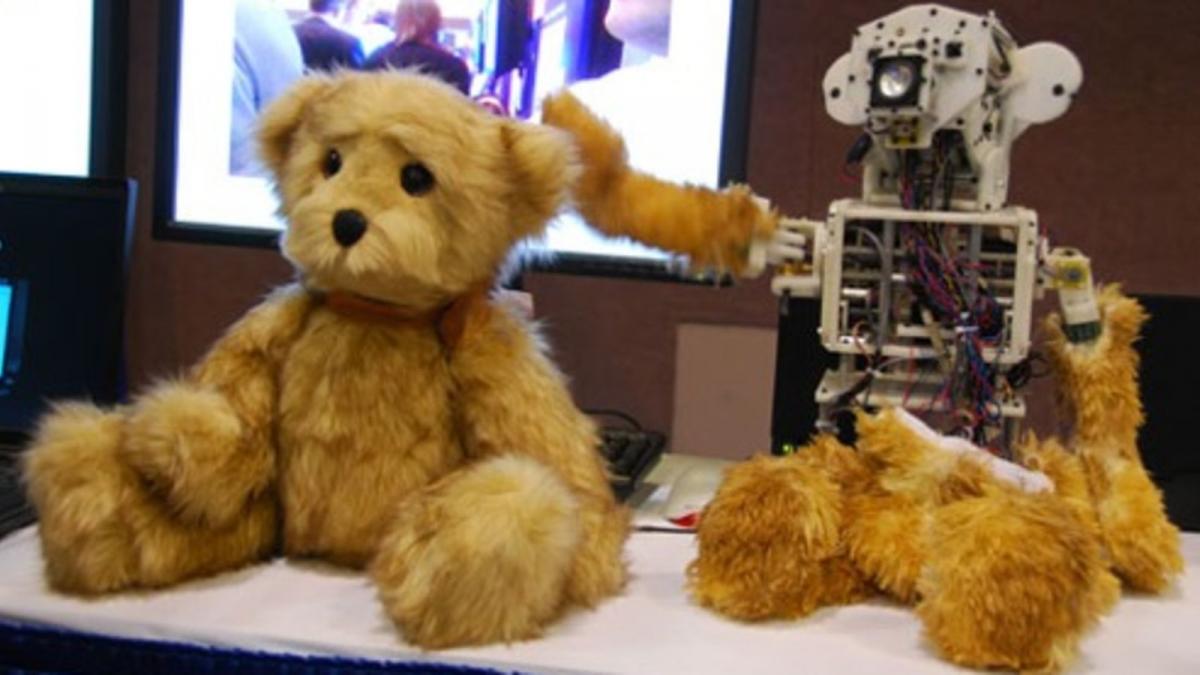
Personal Robots Group at the MIT Media Lab
“The Huggable”
The Huggable™ is a new type of robotic companion being developed at the MIT Media Lab for healthcare, education, and social communication applications. The Huggable™ designed to be much more than a fun interactive robotic companion. It is designed to function as a team member that is an essential member of a triadic interaction. Therefore, the Huggable™ is not designed to replace any particular person in a social network, but rather to enhance that human social network.

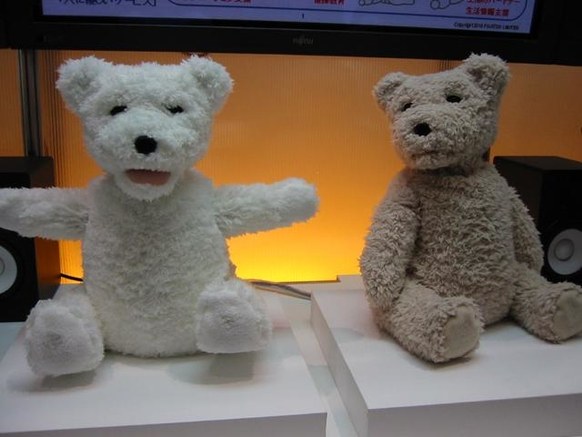
Wired.com
Fujitsu’s Teddy Bear Is a Social Robot
Teddy bears are not just cuddly creatures for kids at bed time. Fujitsu Labs has developed a prototype teddy bear for adults that's packed with some sophisticated hardware and can interact with and respond to humans. The stuffed bear is being called a "social robot with a personality," and can make simple gestures, eye contact and small talk.
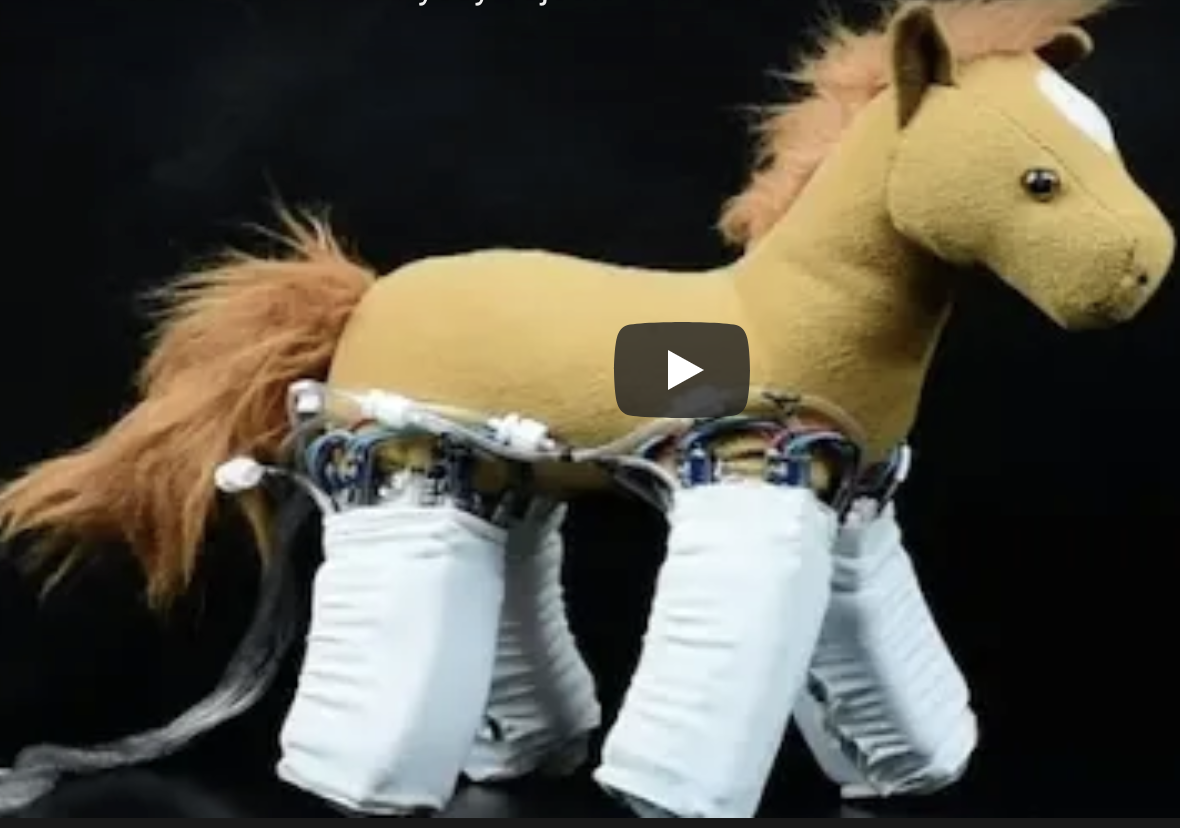
Hakaday
Turn Your Teddy Bear into a Robot with Yale’s “Robotic Skin”
Despite what we may have seen in the new Winnie the Pooh movie, our cherished plush toys don’t usually come to life. But if that’s the goal, we have ways of making it happen. Like these “robotic skins” from Yale University. Each module is a collection of sensors and actuators mounted on a flexible substrate, which is then installed onto a flexible object serving as structure. In a simple implementation, the mechanical bits are sewn onto a piece of fabric and tied with zippers onto a piece of foam. The demonstration video (embedded below the break) runs through several more variations of the theme. From making a foam tube (“pool noodle”) crawl like a snake to making a horse toy’s legs move.
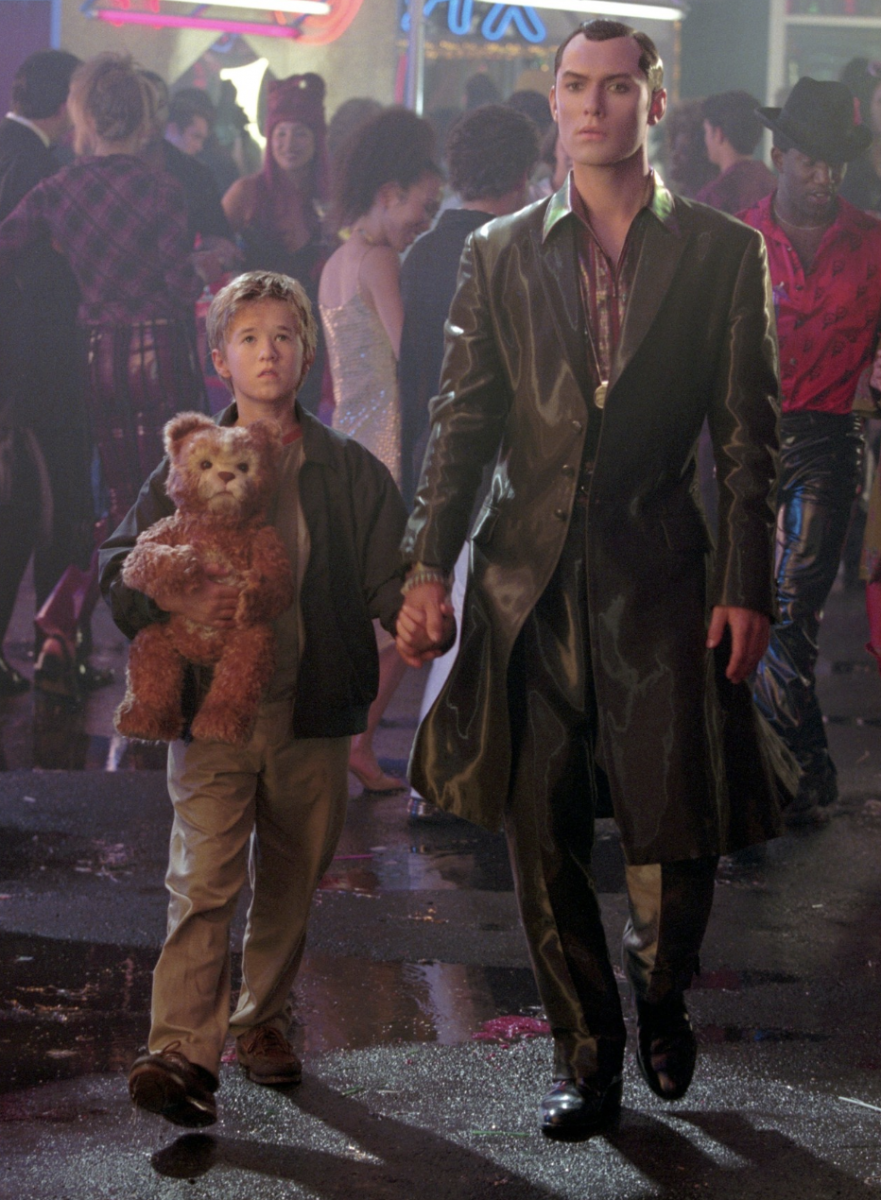
Film: A.I: Artifical Intelligence (2001)
Directed by Stephen Spielberg
In the film, “Teddy” was an A.I.-powered robot-toy and companion to “David,” the boy-robot played by Haley Joel Osment.